BGM FACTORY
KING OF BGM -''-'-'-'-'-'-'-'Download Here'-'-'-'-'-'-'-''-
Saturday, December 1, 2018
Sunday, November 25, 2018
How to Hit 1,000 YouTube Subscribers as Fast as Possible
How to Hit 1,000 YouTube Subscribers as Fast as Possible
Buffer

If you’ve been paying attention, YouTube has had a lot of controversy recently. Some high profile YouTube superstars have been flagrantly violating various terms of service, going viral, profiting from those violations, and then “apologizing” in a way that is both disingenuous and also monetized.
YouTube responds to the viral outrage by making changes to the platform, but time and again, those changes don’t do anything to the people violating the rules, but hurt small-time creators.
This most recent event – with the Logan Paul controversy involving a video that shows a dead body – led to a cascading intellectual failure in the YouTube leadership. Somehow, they decided to… institute rules that prevent many small-time channels from monetizing.
What? Yeah, that’s the reaction basically everyone had. The new policy makes no sense in reaction to the previous issues, and it does nothing to solve the issues at hand. Rather, all it does is makes it harder for small creators to monetize videos, which means advertisers are more likely to get their ads in front of large creator videos, which means more money for advertisers, more money for YouTube, and more money for big-time creators.
It’s a mess, and it means there are thousands of you out there struggling to figure out how to progress. That’s where I come in; I’m going to do what I can to help you reach certain important milestones.
YouTube’s New Policy
So what exactly is YouTube’s new policy, and why does it hurt so many small creators? Well, if you’ve been running a small YouTube channel, you know you don’t make much money. A video that gets 100 views is likely to only earn you a couple of cents, if that.
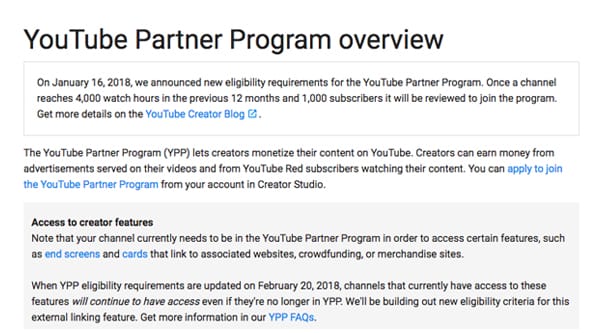
Up until recently, there wasn’t much barrier to earning money on YouTube. Your channel needed to have 10,000 lifetime views, but that’s easy to get. It’s just a matter of time; even the worst video I’ve ever posted still got almost 50 views. That adds up, and unless you’re buying bot views, your view count is unlikely to really go down.
You also needed to run AdSense, which has a whole slew of its own requirements, generally about keeping your content, account, and identity in good standing. That’s fine. It has a $100 minimum payout, which is a little harsh when you’re only earning $3 a month, but hey; it’s still better than nothing at all, right?
YouTube’s new policy – which will officially come into effect February 20 of 2018 – is that all channels must have a rolling minimum of 4,000 hours of view time in the previous 12 months, and a minimum of 1,000 subscribers to the channel, in order to monetize.
Now, let me be a little forthright here. I don’t really use YouTube for marketing that much. I have a small channel that I’ve used basically just to test various YouTube experiments and get insider-only screenshots for article research. I don’t really focus on video marketing. Most of my videos range from 50 to 300 views, while one single video went viral and racked up tens of thousands of views.
That one video alone has accounted for 97% of the watch time on my channel. It has 476,388 minutes of view time – which is 7,940 hours – compared to the next highest video, at 4,919 minutes. Those are metrics for 2017 as a whole.
One video alone going viral got me double the amount of view time necessary to be monetized. Without that video, my channel would still be something like 224,100 minutes of watch time short of reaching that threshold. It’s something I could do, eventually, but it might take 2-3 years of my current level of activity to reach.
That’s all fine, but my channel? It has 90 subscribers. I am 910 subscribers short of being able to be monetized according to the new rules, and as a consequence, this is the email I and many other small channels received.
Additionally, small variations in these metrics can have an impact. According to Google’s reference sheet, if you drop from 1,000 subscribers to 999 for a day or two, it won’t matter, but if that one additional subscriber disappears for a month, you’re out. Watch time needs to stay above that threshold, so if my viral video tapers off and drops below the minimum requirements, I’ll be double-plus out of the program.
Lost Benefits
So what to we small creators lose with this change? It’s more than you might think. A lot of the features of a verified and monetized channel are features we’ve come to take for granted.
 We lose the ability to earn new money. This is the biggest and most obvious change. All of these small creators lose the ability to make money from their channels until they get the minimum requirements necessary. At the same time, YouTube is likely to continue running ads; they just get the profits themselves instead of you. It’s a kick in the pants for small channels that were hoping to reinvest their first payout into improvements to their channel, like commissioning channel art or an intro.
We lose the ability to earn new money. This is the biggest and most obvious change. All of these small creators lose the ability to make money from their channels until they get the minimum requirements necessary. At the same time, YouTube is likely to continue running ads; they just get the profits themselves instead of you. It’s a kick in the pants for small channels that were hoping to reinvest their first payout into improvements to their channel, like commissioning channel art or an intro.
We lose the ability to cash out existing money. Now, this isn’t necessarily as bad as it seems. For those of us with websites, we’re generally using AdSense to monetize the website already. In these cases, all we lose is this one stream of income; the other still exists. However, for those creators who don’t have websites, who are investing wholly in YouTube and video production, this puts a halt and freezes existing money. If you racked up $98 by the time monetization is cut off, you’re out of luck; you can’t cash out.
We lose the ability to have “super chat” for livestreams through YouTube. If you’ve ever watched a YouTube Livestream, you may have seen this. A super chat is when a user donates some money directly to you to get their message as a pop-up in the chat window for a small amount of time.
This is actually a big deal for certain small channels who stream on YouTube frequently, but have small audiences. You might not meet the monetization requirements, but you have people willing to give you money – more money than YouTube would give you anyway. Now, until you meet those requirements, those dedicated audience members will no longer be able to send you money. They will have to take their funds to Patreon, Twitch, or direct donations via PayPal.
We lose the ability to obtain and manage sponsorships. Sponsorships on YouTube are equivalent to Subscriptions on Twitch; they give users access to special channel perks, like a chat badge, custom emojis, and so on. Again; it’s a way users can directly give money to their favorite streamers, and it will be cut off by YouTube if their channel doesn’t meet the requirements moving forward.
Additionally, NEW channels do not have the ability to link to external sites via video end cards. Existing channels won’t have the ability removed, but new channels cannot access it.
To be clear here, every channel will be able to use video end cards. Any channel that has had monetization prior to January 20, 2018, will be able to link to external sites in those end cards. Channels that are not able to monetize yet will not have the ability to link out, but can still use the cards for calls to action.
One thing I will say is that some features, particularly custom thumbnails, will still exist for all channels. A lot of people on Twitter are particularly angry about their removal, but they aren’t being removed. So that particular bit of doom and gloom isn’t accurate. Even so, everything else is bad enough.
The question, then, is how can you meet the requirements as quickly as possiblenow that they’re coming in hot?
Meeting Minimum Monetization Requirements
The view time requirement is, well, not exactly easy, but not the hardest of the two to reach. It’s just a matter of volume. Post videos as frequently as you can, produce them to the best of your ability, and do everything in your power to make them valuable to an audience.
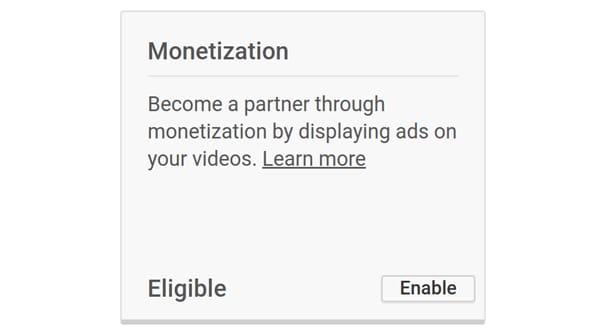
In addition, it can be worthwhile to pay special attention to trends. By posting content that deals with trends in your industry and in the world at large, you draw in more attention. These kinds of videos aren’t necessarily going to bring you subscribers, but they’re more likely to bring in views than some basic marketing tutorial videos or what have you.
Video length can have an impact as well. Up until now, YouTube has tended to favor shorter videos, because they cared more about watch percentage than pure watch time. With the increased important placed on watch time for this change, I would expect the average length of an ideal video to increase.
In general, I would recommend taking these guidelines and expanding them to be a bit longer. Start by setting your video length according to your content. If it takes you an hour to go through your material, take that hour to do it. You may want to split it into three 20-minute videos, four 15-minute videos, or whatever, but don’t cut your content short just for the sake of length. You need the compelling content to keep people watching so you can keep up those watch time metrics.
If you don’t have a set length for your content, I would aim for 3-5 minute videos. That’s the kind of time that gives you plenty of space for content, but doesn’t drag on too long. Not coincidentally, it’s also around the length of time of many popular pieces of music. They don’t go on too long, they don’t cut off too soon; they work to keep listeners interested.
Subscribers, well, they can be tricky. At least, they can be as tricky as you want them to be.
If you’re determined to grow organically, start making use of end cards. End cards can serve two purposes. First of all, for anyone who was interested in your content enough to watch it all the way to the end is a prime target to click through to another video on your channel. You can keep one person watching for a while, cranking up those view minutes.
Secondly, you can use the end card to record a quick verbal call to action to get people to subscribe to your channel. Obviously, asking is better than not asking, right? It’s a bit of a cliché and people make fun of it, but it’s a cliché because it works.
You can also consider influencer marketing. There are YouTube influencers who will be willing to work with smaller channels in a similar niche to produce content. Contribute to a video of theirs – or invite them to contribute to one of yours – and get a shout-out from them in one of their end cards. Them sending people your way can have a huge impact both on watch time and on subscribers, though much like guest posting, it’s a benefit that will likely be short-lived. You need to keep it up on a consistent basis to keep pulling in that benefit.
You will also want to investigate some YouTube SEO. Using keywords in the title, description, and tags will help bring in more people who are just searching for content, and you can strive to keep them around as much as possible.
Of course, you always have the more gray-hat options at your disposal as well.
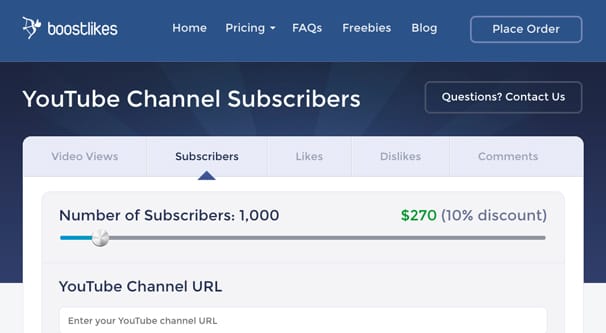
There are plenty of services that sell subscribers, ranging from bot followers you’d get from Fiverr to companies that have their own audience networks they can use to promote you for a fee. Buying subscribers can work very well, so long as those subscribers are worthwhile and not fake accounts that will just be removed and drop you below the necessary threshold a month or two later. Buy high quality followers if you’re going to buy at all; make it a one-time investment.
Finally, there are also a lot of people on Twitter doing a sub-for-sub reciprocation plan to help out other small channels. Get in on a few of those and you can get up to 1,000 relatively quickly. The only risk here is that, since it’s like reciprocal link schemes, Google might want to crack down on people doing it. Will they? I don’t know, but it’s a risk you should know about.
Here are 10 ways you can improve your communication skills in order to become a more effective leader.
- Learn the basics of nonverbal communication. ...
- You have to over-communicate just to communicate. ...
- Avoid relying on visual aids. ...
- Ask for honest feedback. ...
- Engage the audience in discussion. ...
- Start and end with key points.
1. Learn the basics of nonverbal communication.
One study found that nonverbal communication accounted for 55 percent of how an audience perceived a presenter. That means that the majority of what you say is communicated not through words, but through physical cues.
To communicate clearly and confidently, adopt proper posture. Avoid slouching, folding your arms or making yourself appear smaller than you are. Instead, fill up the space you are given, maintain eye contact and (if appropriate) move around the space.
Related: 8 Great Tricks for Reading People's Body Language
2. You have to over-communicate just to communicate.
In 1990, a graduate student at Stanford University was able to prove that presenters overestimate how much listeners understand. In a study that become known as “the tappers and the listeners,” one set of participants was asked to tap the melody of 120 famous songs. The other participants were asked to guess what song was being tapped.
Tappers estimated that 50 percent of the songs tapped would be correctly identified. In reality, only 2.5 percent of songs were correctly identified. This study shows that it is important to communicate clearly, and to over-communicate when sharing new ideas. As this study indicates, it is likely that the audience will fail to absorb as much as you expect.
3. Avoid relying on visual aids.
Steve Jobs instituted a rule at Apple that banned all PowerPoint presentations. Similarly, Sheryl Sandberg instituted a PowerPoint ban at Facebook. Both leaders realized that PowerPoint presentations can hinder rather than help communication.
Be prepared to use words, compelling storytelling and nonverbal cues to communicate your point with the audience. Avoid using visual aids unless absolutely necessary.
Related: 4 Ways to Keep Your PowerPoint Presentation Off Life Support
4. Ask for honest feedback.
As with most leadership skills, receiving honest feedback from peers, managers and members of your team is critical to becoming a better communicator. If you regularly solicit feedback, others will help you to discover areas for improvement that you might have otherwise overlooked.
5. Engage the audience in discussion.
Regardless of how compelling the speaker is, all audiences have limited attention spans. To become a more effective communicator, make presentations and discussions interactive.
Ask the audience a question, encourage people to call out their thoughts during a brainstorming session or at the very least ask hypothetical questions to stimulate the audience.
Related: 10 Ways to Engage Your Audience During an Important Meeting
6. Start and end with key points.
Think back to the “tappers and listeners” study mentioned earlier. Clear communication is of paramount importance. To ensure that the audience understands the key takeaways from a presentation, reiterate key points at the start and finish. This can also be accomplished by providing attendees with a one-pager that includes key points the audience should consider throughout the presentation.
7. Use the PIP approach.
A common framework used by business experts like those at McKinsey is the purpose, importance, preview (PIP) approach to presentation introductions. Following this approach, the speaker first states the purpose of the presentation, and then shares why presentation is important by reviewing implications and possible outcomes.
Finally, the presenter gives a preview of the topics that will be discussed. This framework is a useful way to get audiences excited about the presentation, helping them to focus on your message and on key takeaways.
8. Record important presentations for posterity.
It can take a good deal of time and energy to communicate effectively. In cases where you may need to give the same presentation multiple times, consider recording it and sharing it in the future.
Platforms like Wistia and Zoom allow speakers to record themselves delivering a presentation. These video-recording platforms allow presenters to edit the video to make it more engaging and helpful. They also provide admins with metrics about viewer engagement.
Recorded presentations can be especially helpful for communicators who need to regularly provide training in a company that is hiring employees quickly.
9. Master the art of timing.
While some of their jokes might not be appropriate for the workplace, standup comedians are certainly effective communicators. Comedians like Louis CK, Chris Rock and Dave Chappelle are able to host compelling 90-minute comedy shows, in part because they have mastered the art of timing.
Great comedians, like all great communicators, are able to feel out their audience to determine when to move on to a new topic or when to reiterate an idea.
Related: Ask These 7 Questions to Get the Honest Feedback You Need
10. Get comfortable speaking extemporaneously.
When lawyers present a case in front of the United States Supreme Court, they typically speak extemporaneously. That is to say, the lawyers write down a series of topics they intend to discuss, but they do not memorize what they would say word for word. This method of communicating allows the lawyers presenting a case to cover all of the necessary points, while giving them flexibility as to how to communicate based on audience reaction or questions.
Business communicators should consider adopting an extemporaneous speaking style. It takes practice, but it will allow for more natural communication, and can help with audience engagement.
Conclusion
Communicating clearly is one of the most effective skills you can cultivate as a business leader. Remember to communicate using nonverbal and verbal cues. Listen carefully to what others have to say, and over-communicate in novel ways to ensure the content of the conversation sticks with the audience.
How to Get More Hours of Watch Time on YouTube
Buffe
r
r

YouTube recently made a major change to their platform, in an attempt to make it a better site for advertisers. Unfortunately, their change also means that tens or hundreds of thousands of small creators, small businesses, and other newcomers to the platform have no ability to monetize their channels.
The change to monetization is an increase in the requirements to become a YouTube partner and gain access to Partner features, mostly monetization itself. The new requirements to monetize a channel are: a minimum of 1,000 subscribers and a minimum of 4,000 hours of video watch time in a rolling 12-month period.
We already covered half of the equation a few weeks ago; how to reach that all-important 1,000-subscriber milestone. Now let’s take a look at the other half; how to reach and maintain 4,000 hours of watch time on your videos.
First Some Math
First, let’s take a look at some math. 4,000 hours may seem like a lot of time, and it is, but for a site like YouTube, it actually isn’t. 4,000 hours of watch time is 240,000 minutes. Divided up by month, and that means you have to maintain 20,000 minutes of watch time per month on average. This can be done with one mediocre video that goes viral, or many less interesting videos that achieve a normal to moderate viewership.
20,000 minutes still seems like a lot, but if you post a two minute video, that’s 10,000 views on that video per month. For those of us with YouTube channels with videos averaging 100 views total, that’s a lot, but bear with me. Obviously, you don’t need to get all of that with one single video.
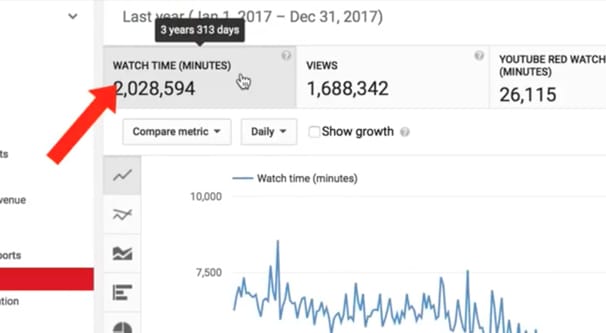
A five-minute video, watched all the way through by each viewer, would need 4,000 views. However, two five-minute videos would only need 2,000 views each. See where I’m going with this?
If your videos average 100 views each, but if each of those 100 views watches the full five-minute video, that’s 500 minutes per video. You need to post eight videos per month at that level – two per week – to reach your goals.
Of course there’s a lot more to it. A lot of people don’t watch videos all the way through. You might actually need 200 views per video to achieve the same sort of numbers, or more. But then, a few videos performing a bit above average can balance that out.
You also can consider the fact that older videos may still get views and watch time. Every video you post adds to your rolling total, and while older videos can drop off over time, they’re never entirely useless.
If the number crunching doesn’t make you feel any better, though, don’t fret; all you really need to do is implement a variety of techniques to increase watch time on individual videos and views on videos overall. It might take some time, but you can build up to that point in a way that has a hard time of decreasing below it again.
Get More Subscribers
I’m putting this one right up at the top for two reasons; it’s very important, and it’s not very important.
What do I mean by this? Well, your subscriber count is pretty darn important, particularly if you’re under the 1,000 subscriber mark. You want to reach that benchmark, so you want to get more subscribers.
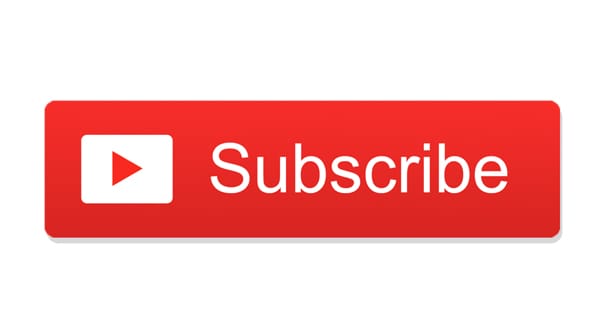
On the other hand, when you’re using YouTube, how many of the videos you watch are from people you subscribe to? I know in my personal experience, I tend to watch a lot of content from someone before I decide they’re worth a sub. I’ll be more liberal with them moving forward, to help out smaller creators I like, but for the major ones with hundreds of thousands or millions of subscribers? It doesn’t help me much to sub to them. YouTube’s recommendation engine will show me their content regardless
Getting more subscribers should be a goal, but it’s not going to solve your problems all on its own. You need to put a lot of work into your videos themselves, which is what most of the rest of the tips are about.
Post More Videos
I covered this a lot in the math section up above, but it bears repeating: the more videos you post, the less views each one needs to reach your goal. If you had 240,000 videos on your channel, each one would only need one minute of view time per year to reach your goal. That’s an extreme example, but it’s technically true.
The most important part, actually, is consistency. In the same way that Google wants you to post at least once per week on your blog to keep it timely and fresh for organic search, YouTube wants you to post videos frequently to keep your channel active and fresh for search.
Organize Videos into Playlists
Playlists have one major benefit for creators; autoplay. When you click to watch a video as part of a playlist, when that video ends, a few seconds will pass and YouTube will automatically load into the next video in the list. As long as your viewers don’t turn this off, they can end up watching three, four, five videos or more in a row before they get bored and go do something else. In some cases the might leave in the middle of a video that’s playing – or right as one ends – and not stop it, letting it play videos to an empty room. That watch time still counts! At least for a while.

Playlists also help you build individual streams of content and keep an organized channel, both of which help your videos be found by people interested in the content. Playlists can also show up in search as well as individual videos, for added exposure.
Experiment with Video Length
A lot of advice will tell you to create longer videos, but there are diminishing returns. Two minute videos might get a lot of views watching all the way through, but leave the viewer wanting a deeper look they have to go elsewhere to get. Ten minute videos might drive away people who are watching via a mobile device or who aren’t hooked into the content right away. Hour-long videos will have a huge dropoff of people in the early minutes, but those who stick around can be worth a lot of watch time.
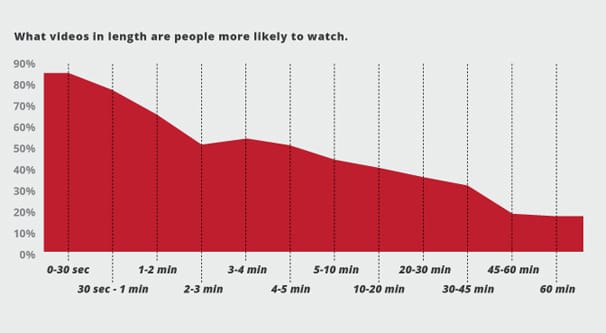
Don’t rely on any advice from some YouTube SEO guy or blog writer; experiment yourself. Your audience, your content style, your depth of coverage, they all matter. Figure out what the ideal length is for your specific situation, and lean heavily into that.
Use Compelling Meta Data
YouTube meta data is composed of several things. You have your video title and your description, just like you would on a blog post. You also have your keywords, like the old meta keywords section for SEO, except they’re important and work. You also have your custom thumbnail, which should be enough to hook someone in conjunction with the title before they’re even on the page. Don’t forget to follow YouTube’s rules for meta data while you’re at it; you don’t want a video to be delisted or demonetized once you’ve done all the work to get it there.
Embed Videos Frequently
Embedded videos don’t benefit from descriptions, YouTube search, playlist functionality, or the ability to engage with the video unless you click through. They can also sometimes be limited in that they can’t be watched in full screen, though this can be changed.
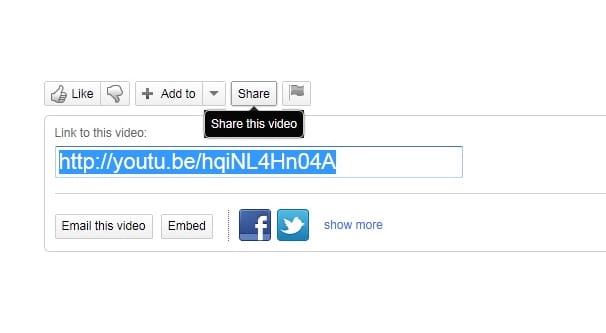
However, every minute of watch time that comes from an embedded video still counts. Embedding videos into your blog posts, linking to them on Facebook and Twitter, and generally making use of your content off-site can be very useful towards boosting your watch time.
Start With a Great Hook
People who watch YouTube videos aren’t there for a lengthy intro you bought on Fiverr, they want to see your content. This is why a lot of popular YouTubers either start with a sub-five-second intro, or just have a catchphrase they say, or drop a 10-second hook before moving into the intro like a TV program would. You only have a few seconds, no more than 30 in general, to hook your viewer. It’s the make or break moment for them to determine whether or not they’re going to keep watching.
Create Unique and Interesting Content
Make sure your content isn’t duplicated or too superficial to be worthwhile. If ten different people all cover the same topic, the one who covers it in the most interesting, highest quality, or most amusing way is going to get all of the traffic. A lot of times this is going to be someone already established, and competition is fierce, but you still need to try.
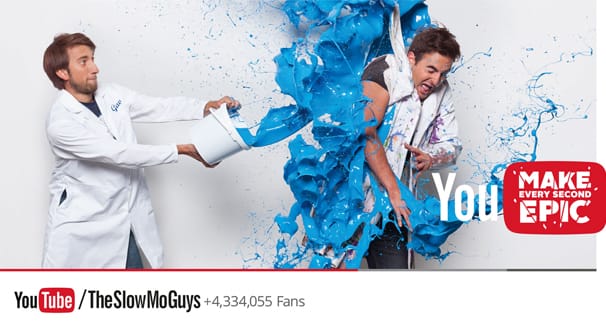
Dig deep, cover odd perspectives, explain detailed concepts simply, or set up some kind of gimmick that gets you a unique angle on everything you do. Good Mythical Morning is a good example of this; they cover typical news like a morning show on TV, but they have that unique format going for them.
Create a Mix of Trending and Evergreen Content
Trending content is great because it can get you a big spike of views, and that watch time is relevant for a full year before it drops off. A few good spikes like that and you can have your annual 4,000 hours covered before you know it. On the other hand, trending or viral content drops off quickly.
Evergreen content, meanwhile, might not have the potential to surge and cover your requirements right away, but it does keep lending you value month after month. A video that gets 1,000 views in the first week and 10 per week afterwards can be helpful, but one that gives you a steady 200 per week for a year is going to do more work over time.
Use Video End Cards
Video end cards are being limited with the monetization changes; you can still link to other videos on your channel, but you can’t link to off-site pages anymore. Still, end cards are like the poor man’s playlist; they lead the user to other videos or other options to watch, which can keep them circulating through your content for longer.
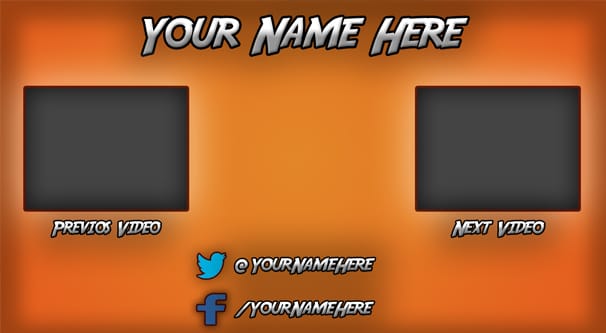
Just keep in mind that posting a five-minute video with a 30-second end card means a “complete” view of the video is only 4:30 instead, so make sure to calculate potential watch time appropriately for people who skip out early.
Study Videos and Replicate the Best Content
Once you have a few dozen videos up and can get some decent analytics information, you can start to figure out which videos are doing well and which are not. The ideal is to figure out what elements of which videos are attracting people, figure out why they’re worthwhile, and replicate that value in future videos.
All of those top-level creators with their slick formats? They didn’t get that way by chance, they’ve been steadily refining that format for months or years. You can do it too.
Just keep in mind that once one video is successful enough to be picked up by the YouTube algorithm, its relative value is gone. That video will perform so much better than the comparison becomes worthless.
Collaborate with Other Creators
If you can find creators who are willing to collaborate with you, do so. I’ve seen music teachers use their videos to critique submissions from fans, I’ve seen channels work together to do projects that suit both their audiences, and so on.
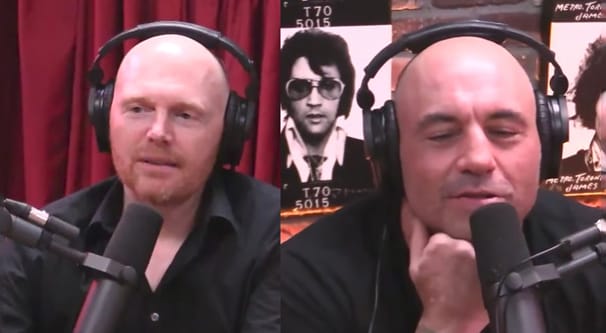
Collaborate to share each other with your respective audiences, and hopefully you can keep some of them around.
Buy Good Views and Avoid Bad Views
Alright, let’s address the elephant in the room; buying video views. You can get a lot of views this way, but they won’t always be worthwhile views. A lot of view sellers focus on exactly that; views, not watch time. Each view will only last 30-60 seconds and be aimed at increasing the view count, which isn’t worthwhile for your channel.
If you’re going to purchase watch time, make sure you’re actually getting watch time, and that the watch time actually lasts. YouTube will filter out fraudulent views and drop them, decreasing your watch time by however long the view was, and can even penalize your channel if they think you’re buying bad views.

 1
1Endhira Logathu Sundariye (Video Song) - 2.0 [Tamil] | Rajinikanth | Shankar | A.R. Rahman
Endhira Logathu Sundariye (Video Song) - 2.0 [Tamil] | Rajinikanth | Shankar | A.R. Rahman
Presenting you the Official Video of 'Endhira Logathu Sundariye..' from 2.0 [Tamil]; Starring Rajinikanth, Akshay Kumar & Amy Jackson in lead roles, Music Composed by A R Rahman, Produced by Lyca Productions & Directed by Shankar. Listen to the Music of 2.0 on your favorite music app - divo.in/2Point0Tamil Track Details Track: Endhira Logathu Sundariye Movie: 2.0 [Tamil] Lyrics: Madhan Karky Singers: Sid Sriram, Shashaa Tirupati Music: A R Rahman #2Point0 #LycaProductions #Rajinikanth #AkshayKumar #ARRahman #Shankar Lyca Productions Subaskaran presents -Team 2.0- Cast : 'Superstar' Rajinikanth, Akshay Kumar, Amy Jackson & Others Written & Directed by S. Shankar Produced by Subaskaran Music: A. R. Rahman Cinematographer: Nirav Shah Editor: Anthony Art: T Muthuraj Jeya Mohan | V Srinivas Mohan | Rif Dagher | Resul Pookutty | Mary E Vogt | Kenny Bates | Nick Powell | Steve Griffin | Silva | Legacy Effects | Double Negative | Quantum FX | Bosco | Na Muthukumar | Madhan Karky | Rocky
Presenting you the Official Video of 'Endhira Logathu Sundariye..' from 2.0 [Tamil]; Starring Rajinikanth, Akshay Kumar & Amy Jackson in lead roles, Music Composed by A R Rahman, Produced by Lyca Productions & Directed by Shankar. Listen to the Music of 2.0 on your favorite music app - divo.in/2Point0Tamil Track Details Track: Endhira Logathu Sundariye Movie: 2.0 [Tamil] Lyrics: Madhan Karky Singers: Sid Sriram, Shashaa Tirupati Music: A R Rahman #2Point0 #LycaProductions #Rajinikanth #AkshayKumar #ARRahman #Shankar Lyca Productions Subaskaran presents -Team 2.0- Cast : 'Superstar' Rajinikanth, Akshay Kumar, Amy Jackson & Others Written & Directed by S. Shankar Produced by Subaskaran Music: A. R. Rahman Cinematographer: Nirav Shah Editor: Anthony Art: T Muthuraj Jeya Mohan | V Srinivas Mohan | Rif Dagher | Resul Pookutty | Mary E Vogt | Kenny Bates | Nick Powell | Steve Griffin | Silva | Legacy Effects | Double Negative | Quantum FX | Bosco | Na Muthukumar | Madhan Karky | Rocky
how to link blogger to adsence
:max_bytes(150000):strip_icc():format(webp)/blogger1-572039f55f9b58857db25919.png)
Setting up a Blogger account takes three easy steps. Create an account, name your blog, and choose a template. One of those steps is already finished as long as you have created a Google account for any other purpose, such as Gmail.
You can host multiple blogs with the same account name, so the Google account you use for Gmail is the same Google account you can use for all your blogs. This way you could separate your professional blogs you use for income from any personal blogs.
The first step is simply to log into Blogger and create a new blog.
02
of 08
Register for a Domain (Optional)
:max_bytes(150000):strip_icc():format(webp)/Blogger2-57203e635f9b58857db86cdf.png)
When you register a new blog on Blogger, you have the option to register a new domain using Google Domains. If you opt not to do so, you just need to pick a "bloglspot.com" address. You can always go back and add a domain later, and if you already have a domain name from some other service, you can direct your domain to point to your new blog on Blogger.
03
of 08
Register for AdSense (If You Have Not Done So Already)
:max_bytes(150000):strip_icc():format(webp)/Blogger5-57203fc13df78c564004f137.png)
Before completing the rest of these steps, you must link your AdSense account to your Blogger account. In order to do that, you must have an AdSense account. Unlike many other Google services, this isn't one that comes automatically with registering for an account.
Go to www.google.com/adsense/start.
Registering for AdSense isn't an immediate process. AdSense will start appearing on your blog as soon as you register and link the accounts, but they will be ads for Google products and public service announcements. These do not pay money. Your account will have to be manually verified by Google in order to be approved for full AdSense use.
You will need to fill out your tax and business information and agree to AdSense terms and conditions. Google will verify that your blog is eligible for AdSense. (That it doesn't violate terms of service with things like obscene content or illegal items for sale.)
Once your application is approved, your ads will change from public service ads to paying contextual ads if any are available for the keywords on your blog.
04
of 08
Go to the Earnings Tab
:max_bytes(150000):strip_icc():format(webp)/Blogger6-572042743df78c564004f56f.png)
Ok, you have created both an AdSense account and a Blogger blog. Maybe you're using a Blogger blog that you've already established (this is recommended - you don't actually earn much with a low traffic blog you just created. Give it some time to build up an audience.)
The next step is to link the accounts. Go to the Earnings settings on your blog of choice.
05
of 08
Link Your AdSense Account to your Blogger Account
:max_bytes(150000):strip_icc():format(webp)/Blogger7-572042c15f9b58857db8b114.png)
This is a simple verification step. Verify that you want to link your accounts, and then you can configure your ads.
06
of 08
Specify Where to Display AdSense
:max_bytes(150000):strip_icc():format(webp)/Blogger8-5720431c5f9b58857db8b118.png)
Once you've verified that you want to link your Blogger to AdSense, you'll need to specify where you want ads to display. You can place them in gadgets, between posts, or in both places. You can always go back and change this later if you think you have too many or too few.
Next, we'll add some gadgets.
07
of 08
Go to Your Blog Layout
:max_bytes(150000):strip_icc():format(webp)/Blogger3-57203ebe3df78c564004ef62.png)
Blogger uses gadgets to display informational and interactive elements on your blog. To add an AdSense gadget, go first to Layout. Once in the layout area, you'll see the areas designated for gadgets within your template. If you don't have any gadget areas, you'll need to use a different template.
08
of 08
Add the AdSense Gadget
:max_bytes(150000):strip_icc():format(webp)/Blogger4-57203f7c3df78c564004f130.png)
Now add a new gadget to your layout. The AdSense gadget is the first choice.
Your AdSense element should now appear on your template. You can rearrange the position of your ads by dragging the AdSense elements to a new position on the template.
Be sure to check with AdSense Terms of Service to make sure you don't exceed the maximum number of AdSense blocks you're allowed.
Subscribe to:
Posts (Atom)
Download this ringtones https://youtu.be/MyyKQWBukbM Download best attitude of Men Link click